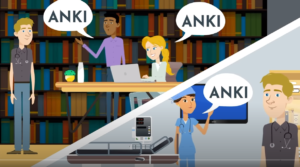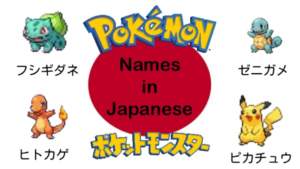
If you grew up watching Dragon Ball Z or Naruto, or if you simply have a life-long infatuation with Japanese culture, you’ve probably thought about trying to learn the language. If you’ve spent any time trying to get started, you’ve probably been overwhelmed with the sheer amount of stuff you have to learn. Since the language is so different from English, it’s almost like learning how to talk entirely over again. You may even have made multiple attempts and ended up becoming discouraged.
Is Japanese a Difficult Language to Learn?
It is true that Japanese can be a difficult language to learn. In fact, it is often referred to as one of the hardest to learn. Thankfully, this couldn’t be farther from the truth. Once you wrap your head around sentence structure and vocabulary, it is actually one of the easiest languages out there. The key to actually making progress is to streamline the process and find a way to start taking bite-sized chunks out of that overwhelming mountain of information. Of course, it’s difficult to do this without help; even the most skilled polyglots need to know where to start with a new language.

For Japanese, thankfully, this question is easy to answer: start with the alphabet. Japanese actually uses two phonetic syllabaries, called kana, that are fairly easy to learn: hiragana and katakana. If learning two different alphabets sounds difficult to you, consider that English also has at least two: upper and lower case. Looking up and memorizing these two syllabaries should be the starting point for everybody hoping to learn Japanese. Imagine trying to learn English using only the Russian alphabet!

Another good reason to start with kana is that they can be learned using simple flashcard techniques. If you haven’t already, you should look into a program called Anki; it’s a comprehensive digital flashcard platform that can be synchronized between different devices. The name actually comes from the Japanese word for memorization. Once you have a good handle on the kana, you can move on to simple grammar and sentence structure.
Studying Japanese can be fun
Of course, if you get overly bored while studying kana, it never hurts to branch out a bit. The main thing that will keep you studying Japanese is enjoying it. Believe it or not, if you aren’t having a good time studying a language, it is very unlikely that you will learn it to fluency, no matter what method you use. Once you get a handle on the basics, you can pick up a textbook and start working through grammar. Language learning apps such as Duolingo are also a great option, as long as you always do the necessary research to make sure they’re right for you.
Start with Children’s Books and Cartoons

So, now that we have a starting point and a general direction, how do we move forward without becoming overwhelmed? The best way is to start with simple native materials. Things like children’s books and cartoons work great for this stage. People will tell you that learning Japanese from books and cartoons isn’t the best idea, because it can teach you bad habits. They are wrong. Of course, it’s important to always understand the proper context of what you’re learning, but just like when you learned your native language, the more you use it, the faster you will learn. Although it can be expensive to ship native materials from Japan, it is fairly easy to find simple Japanese materials on websites such as YouTube.
What is Kanji?
Of course, there is one aspect of Japanese that can be quite daunting for new students: Kanji. These are the complex symbols borrowed from Chinese that express entire concepts rather than sounds. Unfortunately, there are thousands of them, and they have to be memorized in order to use them properly. The good news is that they aren’t as hard to learn as you may think. The Japanese government forces Japanese students to learn these symbols through repetition, which is probably one of the worst ways to teach anybody anything. Although it works well enough if you’re brought up doing it every day in the Japanese school system, as foreigners, we rarely benefit from a method that is boring and repetitive.
The Heisig Method
Language specialists will be the first to tell you that repetition can actually be much, much slower than other methods of memorization. Luckily for you, a really cool guy named James Heisig came up with a method in the 1970s for easily learning as many kanji you want, with minimal repetition and time investment. He wrote his method into a very popular book called Remembering The Kanji. The method is focused on teaching the simplest symbols first, and associating them with easily remembered stories in order to practice recalling what you’ve learned. It has a lot of coverage online, so you won’t necessarily need to buy the book in order to learn the method, but it can definitely be a huge help to your studies.
Once you’ve got a handle on the Heisig method, you can teach yourself a few hundred kanji very quickly (it’s a lot easier than it sounds), and begin actually reading Japanese! The first time you read a full Japanese sentence and understand it is a great feeling, and it isn’t actually that far outside your grasp. Once you’ve reached this point, the real fun begins. Since Heisig focuses mainly on learning the meanings of the differrent kanji, learning how to actually say them can be a bit confusing. On top of that, Japanese, just like any other language, has a large amount of slang and organic grammar that won’t be covered in your textbooks. How do we start to learn this stuff? Simple – sentence flashcards from native materials.
Basically, if you pick up an actual Japanese book, even if its a children’s book, there will be things you don’t understand. How do we take advantage of this? Every time you find a sentence with a word you don’t know, or a grammatical structure you’re unfamiliar with, make a flashcard out of it! Use the dictionary or online resources to figure out the parts you don’t know, and put them on the back of the card. If you’re using Anki, the program will actually keep track of how well you remembered the answer, and put longer and longer periods of time between card appearances. This is called spaced repetition, and it’s scientifically proven to be one of the most effective ways to memorize large scales of diverse information without drilling them for hours on end.
Once you’ve started working your way through your children’s books and adding sentence cards regularly, you will likely begin to enjoy the process. Eventually, you will find that you don’t have to pause as often, and you will learn new words almost without trying. This is around where you’ll start being able to passively learn vocabulary from context, as well.
Internalize the Japanese Language
The last thing you should know before you get started is that passively listening and reading Japanese in your everyday life is the key to internalizing the language. If you set your smartphone to Japanese, for example, you will immediately be forced to learn enough vocab to use the phone, and then you will also be passively reinforcing that information every single time you use it! Don’t be afraid of not being able to read stuff; not being able to read is the first step towards being able to read! Also, remember to never watch anime with subtitles. It doesn’t matter if you only understand every fifth word; watching with English subtitles will never help your Japanese.
Eventually, you’ll be able to use your computer, fill out forms, watch anime or movies, and even participate in conversations. If you do it right and make sure to enjoy yourself, it’s likely that it will happen before you even realize it! The key is to avoid burnout and to make changes in your study routine if you find yourself getting discouraged. Remember, if it’s not enjoyable, you will probably give up long before you learn anything important or fun.
Best of luck and Ganbare!
About the Author

Hello! I am an avid young writer who loves to do content creation and Japanese to English translation. I have traveled the world from Veradero, Cuba to Tokyo, Japan learning languages and building experiences.
Click here to learn more about Japanese English translation services.





